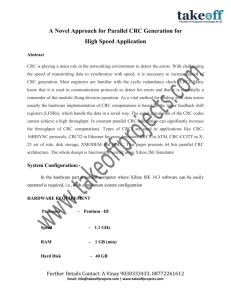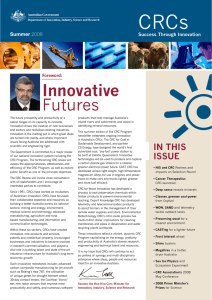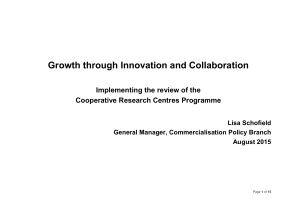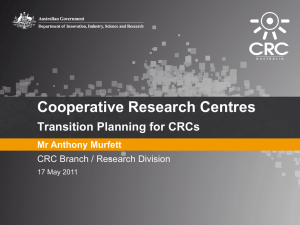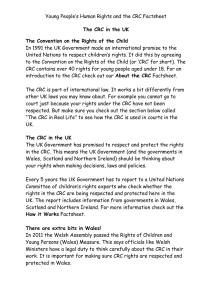CRC-Terms_of_Reference
advertisement
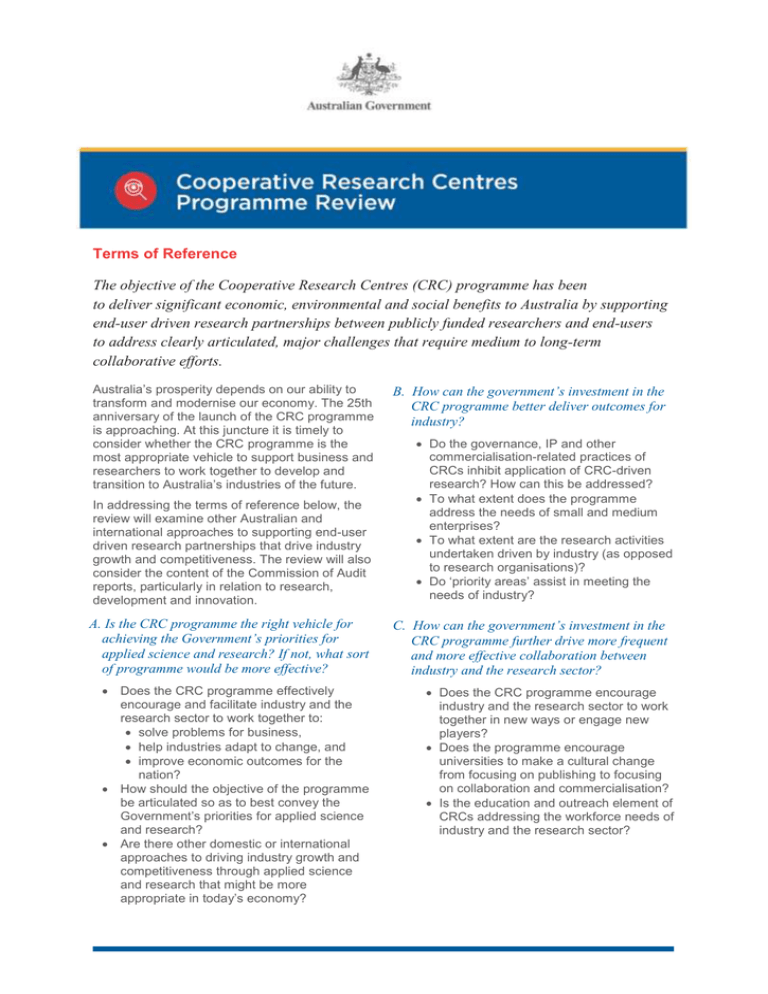
Terms of Reference The objective of the Cooperative Research Centres (CRC) programme has been to deliver significant economic, environmental and social benefits to Australia by supporting end-user driven research partnerships between publicly funded researchers and end-users to address clearly articulated, major challenges that require medium to long-term collaborative efforts. Australia’s prosperity depends on our ability to transform and modernise our economy. The 25th anniversary of the launch of the CRC programme is approaching. At this juncture it is timely to consider whether the CRC programme is the most appropriate vehicle to support business and researchers to work together to develop and transition to Australia’s industries of the future. In addressing the terms of reference below, the review will examine other Australian and international approaches to supporting end-user driven research partnerships that drive industry growth and competitiveness. The review will also consider the content of the Commission of Audit reports, particularly in relation to research, development and innovation. A. Is the CRC programme the right vehicle for achieving the Government’s priorities for applied science and research? If not, what sort of programme would be more effective? Does the CRC programme effectively encourage and facilitate industry and the research sector to work together to: solve problems for business, help industries adapt to change, and improve economic outcomes for the nation? How should the objective of the programme be articulated so as to best convey the Government’s priorities for applied science and research? Are there other domestic or international approaches to driving industry growth and competitiveness through applied science and research that might be more appropriate in today’s economy? B. How can the government’s investment in the CRC programme better deliver outcomes for industry? Do the governance, IP and other commercialisation-related practices of CRCs inhibit application of CRC-driven research? How can this be addressed? To what extent does the programme address the needs of small and medium enterprises? To what extent are the research activities undertaken driven by industry (as opposed to research organisations)? Do ‘priority areas’ assist in meeting the needs of industry? C. How can the government’s investment in the CRC programme further drive more frequent and more effective collaboration between industry and the research sector? Does the CRC programme encourage industry and the research sector to work together in new ways or engage new players? Does the programme encourage universities to make a cultural change from focusing on publishing to focusing on collaboration and commercialisation? Is the education and outreach element of CRCs addressing the workforce needs of industry and the research sector? D. How could contractual and administrative requirements of the CRC programme be streamlined? Are there elements of the programme guidelines that limit the ability for industry to effectively engage with researchers? Is the current selection process excessively onerous on participants? Do the current reporting requirements appropriately balance the need for the Government to be accountable to taxpayers and the need to allow participants to focus on research, development and commercialisation? E. Is there sufficient demand within the research sector and industry for a programme that builds collaborative structures that facilitate end-user driven research? What is the pattern of demand for the programme from within industry and universities/other research organisations over the past 10 years? If there are changes to demand, why have they occurred and how could they be addressed? Are there specific industries of significance to the Australian economy or specific types of enterprises that have not engaged in the CRC programme, and if so, why? The review should also take into account the Department of Finance’s Expenditure Review Principles, which can be found at the Department of Finance’s website.



